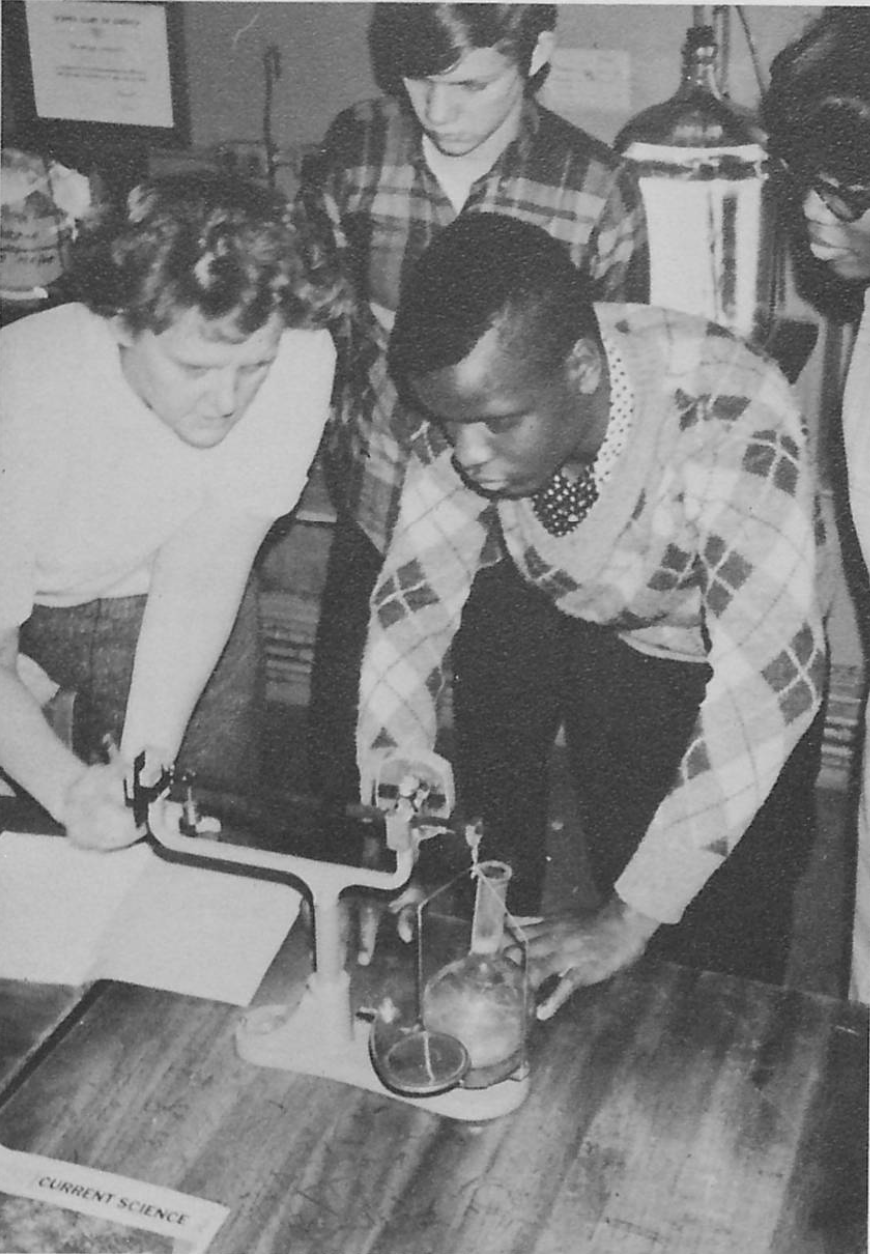In 1953, the Charles E. Emmerich Manual Training High School (see ) moved from 501 S. Meridian Street to 2405 Madison Avenue, its present location. The structure on Meridian Street was renamed the Harry E. Wood Vocational Training School in honor of , who was an alumnus of Manual High School. He became a renowned artist and craftsman and was an educator and administrator at Manual.

(IPS) refurbished the old building, built in 1895, increasing the garage, warehouse, and maintenance facilities at the school. The cost of the remodeling was $350,000.
Harry E. Wood High School opened in the fall of 1953 with the specific purpose of providing vocational education at the secondary level. While vocational training was the original purpose, the school board decided that the primary focus would be on academics, but with exceptional facilities and curriculum to provide students with the vocational training they would need to be successful after high school.
Vocational training during the 1970s emphasized skills to succeed in blue-collar jobs. Courses in barbering, cosmetology, cleaning and pressing were offered to students and adults. The 1965 yearbook showed one Black student in Key Club and two Black students in the senior choir. Seventeen of 31 boys on the track team were African American.
In athletics, Indianapolis Wood High School won several sectional championships in both basketball and track. The Woodchuck’s wrestling team won the Indiana state championship in back-to-back seasons, 1959-1960 and 1960-1961. Former Harlem Globetrotter, “Jumpin’ Johhny” Wilson became the first Black head coach of an integrated Indiana high school when he was named head basketball coach at Wood.

The Indianapolis Board of School Commissioner closed Wood High School in 1978 because of declining enrollment and the age of the physical plant. The decision came in the wake of Indianapolis Judge order to desegregate the Indianapolis Public School system in 1973. His plan called for a city-suburban desegregation, which had not been fully implemented by the time of Wood’s closing in 1978. The School Board of Commissioners agreed with Dillin’s method to desegregate the school system but decided to start with a city-only desegregation effort, followed by Dillin’s more comprehensive plan. Using the former method, three IPS high schools were turned into magnet schools, and Wood was shuttered.
Wood’s elaborate vocational services were moved to the career education center on the campus of . These services included a 15-chair barbershop, a modern beauty parlor, a print shop, and sophisticated equipment for auto mechanics, dry cleaning, and hotel administration, among other trades. Some of the 800 non-graduating Wood students reenrolled there. Almost 40 percent of the remaining non-graduating students were dispersed to six other IPS high schools. Teachers and administrators received preference for openings elsewhere in the IPS system.

In a reversal of the decision to shutter the school, the IPS commissioners spent almost half of a million dollars to convert the high school into the Harry E. Wood Continuing Education Center. Closing Wood as a regular high school allowed the school system to consolidate its far-flung yet burgeoning adult education program into a single headquarters for the first time. The adult program served more than 1,000 adults and teenage mothers in 1978.
In 1981, IPS sold the buildings and parking lots to an unknown buyer. Four years later Brougher Insurance Company bought the building and converted it into office space. purchased the building and remodeled it in 1999, calling it the Brougher Building. A group of investors purchased the building from Lilly in 2015. These investors renamed the building The Union 525 and created an innovative flexible real estate platform for the tech industry in Indianapolis.

Help improve this entry
Contribute information, offer corrections, suggest images.
You can also recommend new entries related to this topic.

